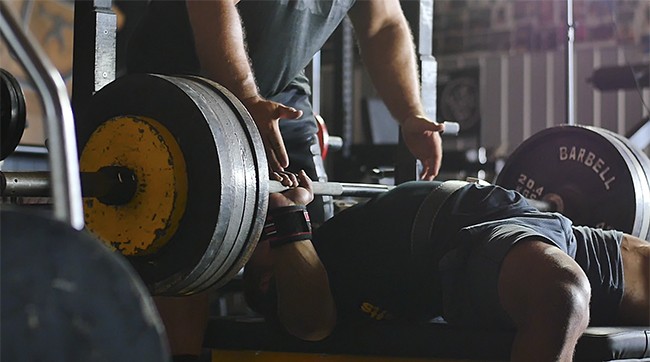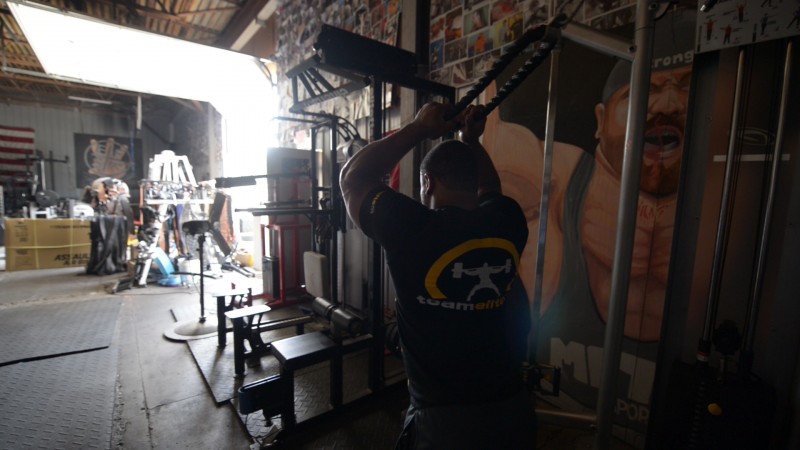
Throughout the articles that I have been generating, there has been a regimented approach to how to successfully plan and guide an athlete through the preparation for competition. When both the athlete and programmer/trainer/coach are of a similar mindset, it will make the processes of preparation that much easier. The most beneficial aspects of preparation can be summed up by the most basic of thoughts: to engage in a plan that prepares for short-term goals, while also aiming towards long-term success and improving strength measurables.
When the measurables of success are steadily improving, both the athlete and coach/programmer are actively engaging in the preparations of maximum athletic performance. When this becomes the primary aims of measurable success, it is vital to put into practice the evaluations previously mentioned in earlier articles.
RECENT: The Yearly Training Plan of the Strength Athlete — When the Barbell Is Taken for Granted
The importance of self and peer evaluations of athletic success and performance is something that is becoming of lesser importance in the common era of strength sport, for reasons that don’t pertain to the goal of this article. However, examining the benefits of review, and using myself as the latest example, it is positive proof that there are areas that even accomplished athletes can improve upon over time.
The process of improvement isn't always the easiest. When reviewing the aspects of training that need to be addressed and improved upon, it is best to look at the positives of training protocol while also examining and recognizing the aspects that need to be revamped or removed. The question then becomes this: how does the athlete and coach/programmer take the evaluations and enact them into the practicals of training?
The above mentioned can be of a slight challenge depending on the methodologies of how the coach/programmer believes in training the athlete. For example, take an athlete that is being programmed on a moderate frequency of a periodized or progressive method. A high percentage of training sessions are nothing more than the three competition lifts of powerlifting, with minimal emphasis on other "drivers" of strength. This makes it presumably difficult to prescribe such an athlete with additional accessory training for recognized deficiencies. There would be the potential for the athlete to become overtrained in a short duration of time.
In contrast, let's consider an athlete with a coach/programmer who is on the other end of training methodology and is programming the athlete in a concurrent module of training. There is the possibility that the transitions of training in accordance with the waving of accommodating resistance and/or the accessories accompanying the waves of training are either misaligned or inappropriately prescribed based on the needs of the athlete. Or better yet, perhaps the athlete is not handling enough classical loadings. In my opinion, training done within this module is easiest to address necessary changes because it will not completely change the athlete's schedule of training, but instead merely re-adjust the prescriptions of training over time. Keep in mind that there are many coaches who train under similar method or methods.
Keep in mind: the needs of the athlete should be evolving as the athlete rises in strength proficiency. Not every training template will mirror the previous.
There is also the difficult aspect of practicality. This will be brief so it can be further expanded upon in the future. When looking at an athlete’s biological and genetic makeup, there will be developing trends in training that will arise over time. Every athlete will have varying responses to training protocols and these responses could potentially evolve as the athlete’s development evolves.
In turn, the adaptations of training for an individual (also known as strength qualities) could and should be taken note of. In this regard, there are notes that a coach/programmer could use to their advantage in assessing the changes that need to be made to an athlete's provisional trainings. These include the following:
- The time between near maximal loadings. Does the athlete best respond to a sequencing pattern between maximal loadings?
- The duration of time between maintenance loadings of a periodic or progressive realm. For example, does the given athlete respond best to an abbreviated or extended mesocycle that is exclusive to periodization/linear sequencing? (4 weeks of maintenance as opposed to 6 weeks or vice-versa)
- The intervals between the transition of accommodating resistances. Does the athlete need a deload or acclimation period based micro-cycle before starting a new wave of resistance? (i.e., a three-week banded wave of resistance with a two-week deloading period followed by a three-week wave of a resistance by way of added chains)
- The facilitating responses to prescribed resistances. Does the athlete best adapt to a chain resistive or band resistive method?
Therefore, when all these variables are taken into account, the coach/programmer will then have a complete understanding of how the athlete naturally responds to the training that has been and that will be prescribed. They should be able to make the necessary adjustments to ensure success. The athlete should begin to truly shine as they evolve and adapt in preparation. To put it mildly, the athlete should feel like their body is being prepared for what the mind knows it can endure during the competitive continuum.













1 Comment